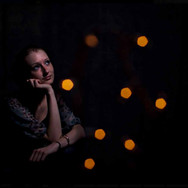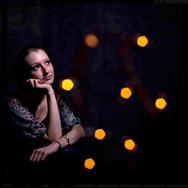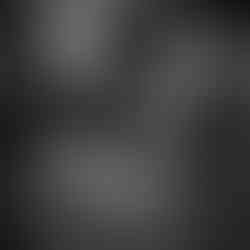Low-Light Photos vs. Just Dark Pics
- Mason Lake

- Jan 27, 2016
- 7 min read
They are not the same.
Low-light photography has been a favorite genre for photographers ever since the art form started. Through my photography career and working at a photo lab I noticed things people misunderstand about low-light photos. Just a photo that's real dark is not a low-light photo. Many seem to think they are or just simply don't know the difference or know how to achieve the look through settings. I want to clear things up and show some examples and at the end I have a list of tips and tricks to use.
First off. I write this just from where I come from, my own career, commercial portraits for years in Hawaii and Portland, OR., photo lab and print jobs for over 7 years as well as being entered and judged in many contests. I don't like to just run my mouth with out anything to support what I say. So I will have example photos along with my thoughts on them.
This will really help you photographers trying to enter contests as well as get published. Judges are sticklers about photographers knowing and expressing a genre correctly. They review thousands of pics and they are not gonna take the time to dissect it ti see if it is or isn't right. One glance is all your photo gets at first judging and it better be inline with the theme or its gone. People have their opinions on defining a genre but at the end of the day you cant call a portrait in a studio a landscape (Unless you are shooting for the body landscape look like Edward Weston.)
First thing that people tend to think about low-light photography is that it's the same as night photography, it's not. Traditionally it was more, but that is because film could never capture a clean, sharp, bright star night like digital cameras can now. With the latest cameras you can expose a pitch black landscape by pure starlight. Wikipedia will disagree with me and we know it is infallible haha. They don't even define low-light photography, it redirects you to night photography. I'd say that sorta proves my point....
Now let me continue on with how I'd define low-light photo.
Google search the definition of low-light photography you will get this
"Low light photography is not necessarily just night photography, as many people assume. There could be different amounts of light coming from various sources and whatever is less than daytime light outside, I consider low-light."
I will say this. If you enter a night sky photo shot into a photo contest "Low-light category" your chances of an award goes way down. Here is why. Its an uphill battle because most judges look for something else besides a dark night sky for low light. Edward Weston and Ansel Adams are 2 of my favorite photographers and they have amazing low-light examples that I show below. Against what I say, it includes night photography in the definition. The rest supports how I feel. To reiterate I'm not trying to state nor do I believe what I say is law.
Probably his most well know photos. Edward Weston's suggestive and controversial Pepper is an ageless low-light photo. In this case a still life. A key element to low-light photos is maintaining you darks and highlights. Like most photos proper exposure is what you should strive for. Through the camera or after the fact. Through the lens always looks better however so its good to learn your settings.

These comparisons I pulled from Gurushots.com, which is a photo challenge website, so it shows thousands of peoples photos. It was in a "Low-Light" challenge. I will show the original first then the same pic touched up by me very quickly. I spent about 30 sec. on each. The final 3 are good examples of low-light, last one being mine. (I gotta tie them in to the blog somehow haha)
Low-light photography relies on proper exposure, there must be highlights & darks, whites & blacks. If not the photo comes across muddy and dark.The most important thing to take from these low-light examples is this. This should be applied to all your photography, however I believe Low-light photos rely possibly the most on exposure.
*If you want more info on how I touched up these photos I have blog articles that go over editing in greater detail.
Now there aren't only portrait low-light photos. Landscapes in a scenic or urban setting can really benefit from the low-light approach. Some of the most famous landscapes are low-light.
Unlike portrait photos where you control the lighting most of the time, landscapes are a different bag. Landscape alot of times are a waiting game and truly only look good at certain times of the year, day or right weather conditions. Its very easy for landscape to look flat when there is the wrong lighting. Its good to find your spot and hang there a couple hours to see how the light changes.
A quick trick to shooting low-light pics with a digital camera is this. Meter for the highlights in the photo, take a pic, then incrementally increase your shutter speed and take a few more pics. Check and review the exposure of the pics and find the setting that gives you a little detail in the highlights and shadows, even if just barely. Like calibrating a computer monitor.
The low-light should be part of the subject and story in low-light photography, not an after thought. Clearly a photo needs a subject to be anything, what I'm saying is this. In my mind a photo of a cat in the dark isn't a "low-light" shot, just a cat in shadows. It's low-light when soft light wraps around the cats furry face as it looks through shades of a window in a dim room. Now the light is being used to add a mood and look to the photo that's more eye catching then a dark furry cat pic. Any movie you watch today will have perfect examples of low-light cinematography, Ridley Scott as a director shoots low-light very well. Blade Runner is very well know for it.
So that concludes what I say true low-light photos should look like. I hope after looking and comparing my photo example you start to see what I'm getting at. Not thinking I'm just ranting away haha. As I mention at the beginning, you cant call a cat photo a night sky photo. There are certain aspects you should know about genres in photography you should understand. Like learning most things you have to learn the rules first before you can break them. Being offended if someone thinks your low-light shot is dark your just burying your head in the sand looking like an ass. Which you cant do with photography, it doesn't help you grow. Speaking as a lab tech, you come of like a tool who thinks your work is different. I'm sorry but its not. Even if you upgrade your Toyota Camry to race, if you call it a muscle car around mustang and camero owners your gonna get laughed in your face.
I have seen a rare few photos get by with dark exposures, usually its the photographers style and they have practiced a lot to tune them just right. If you find photos that break my little rules then good, study them and try to see what the photographer did to make it different. Almost any rule can be broken, you just have to be honest with yourself and judge if it works and comes across how your eye sees it.
Let me give you some quick tips to try and play with, as well as reiterate the important points.

-Proper exposure of your lights and shadows are a MUST in low-light. It also makes editing far more easy.
-The low-light should be part of the subject and story in low-light photography, not an after thought.
-Set to Aperture priority mode on your camera when shooting low-light along with auto ISO. Then you only adjust your shutter speed, making it the easiest way to capture a shot. It is very straight forward. You can use spot metering also if you want more detail in your highlights.
-Digital cameras (especially the newest ones) give you a lot of exposure flexibility. Use that to your advantage as a beginner. So you get the photo you want & you don't get frustrated. But take note of the settings that the camera uses and you will start seeing trends.
-If you know how to set it on your camera. Try Bracket Shooting, it will make getting the different exposures faster so you can compare & find the exposure that works best. Then shoot the shot at those settings in manual. You essentially use your camera as a light meter, just with pics.
-Portrait low-light shots. Try playing with high and low angle light sources. Light at an angle that mimics windows from off the photo look very nice and natural. Light going through rain or smoke in the air look very dynamic and eye catching.
-Landscape shots rely a lot on the time of day. Be ready to dedicate yourself to morning and twilight times of day. If you always shoot at noon then you will get a very flat photo. Overcast days are hard to make eye catching unless you get the sun beam to light the clouds up or break through like the Ansel Adams photo. Cloudy with partial sun or rainy & sun are great days to go out mid-day to shoot. The lighting comes off amazing.
-When I teach people I always say to try and watch your settings so you learn and step outside of the auto modes and shoot (P) Program mode a few times then move on to manual. Purely for when you feel like learning. Review those setting again and again and one day you will realize that every photo you take is exactly as your eye sees it.
Those tips are a good start to help you get those tricky low-light shots to come out the way you want.
Thanks a lot for taking the time to read, hope it helps.
Now go out and shoot! Have fun!
































































Comments